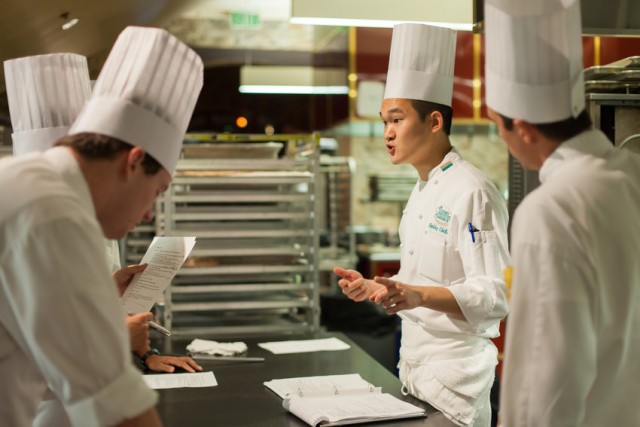By Nina Thorsen

There have been websites to help people connect with what they want to eat since the dawn of the Internet. But the idea that individual chefs should develop their online presence is still fairly new — and it was a hot topic at an industry gathering in mid-November at the Culinary Institute of America in Napa Valley. Previous iterations of the Worlds of Flavor conference have included "The Rise of Asia" and "Spain and the World Table." This year, it was "Kitchens Connected."
I talked with several presenters, including Brendon Marshall, the co-founder and CEO of Kitchit. It’s a San Francisco company that connects chefs with customers looking for an in-home cooking experience. They’ve expanded to L.A., New York and Chicago since opening two years ago.
“We're very much in the early stages of seeing the world of food and the world of technology come together,” Marshall said, “and the companies that'll succeed are the ones that help the chefs succeed.” He got the idea for the site when he was at Stanford Business School, trying to plan dinner parties with his classmates.
Kitchit chefs don’t specialize in the old-fashioned kind of catering, where most of the cooking was done off-site or behind closed doors. The chef is part of the dinner party’s entertainment. “We want to create incredible memories, where food is the conduit,” said Marshall. “Now you can really understand what the caterer's story is, what the chef's story is. They're really the artist of this food, and to be able to interact with them to create the best experience possible. It’s your menu, your items, but working with the chef to learn new things about the food.”